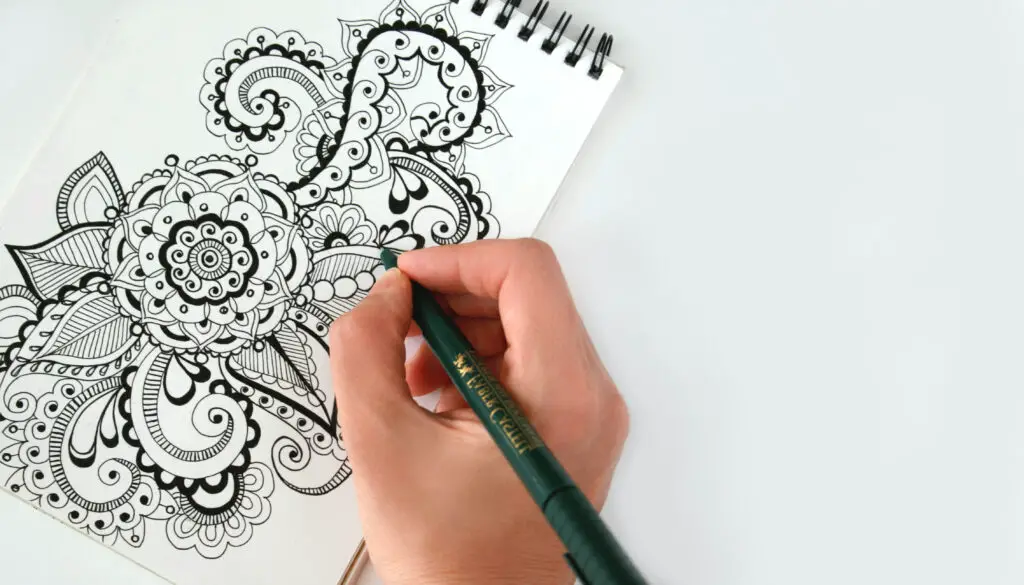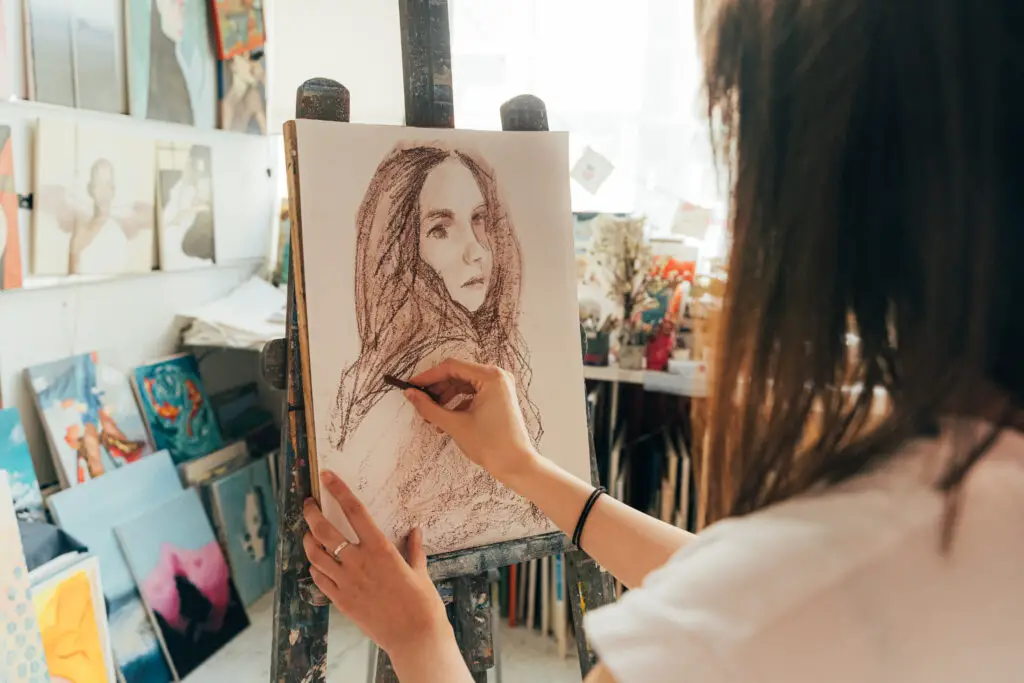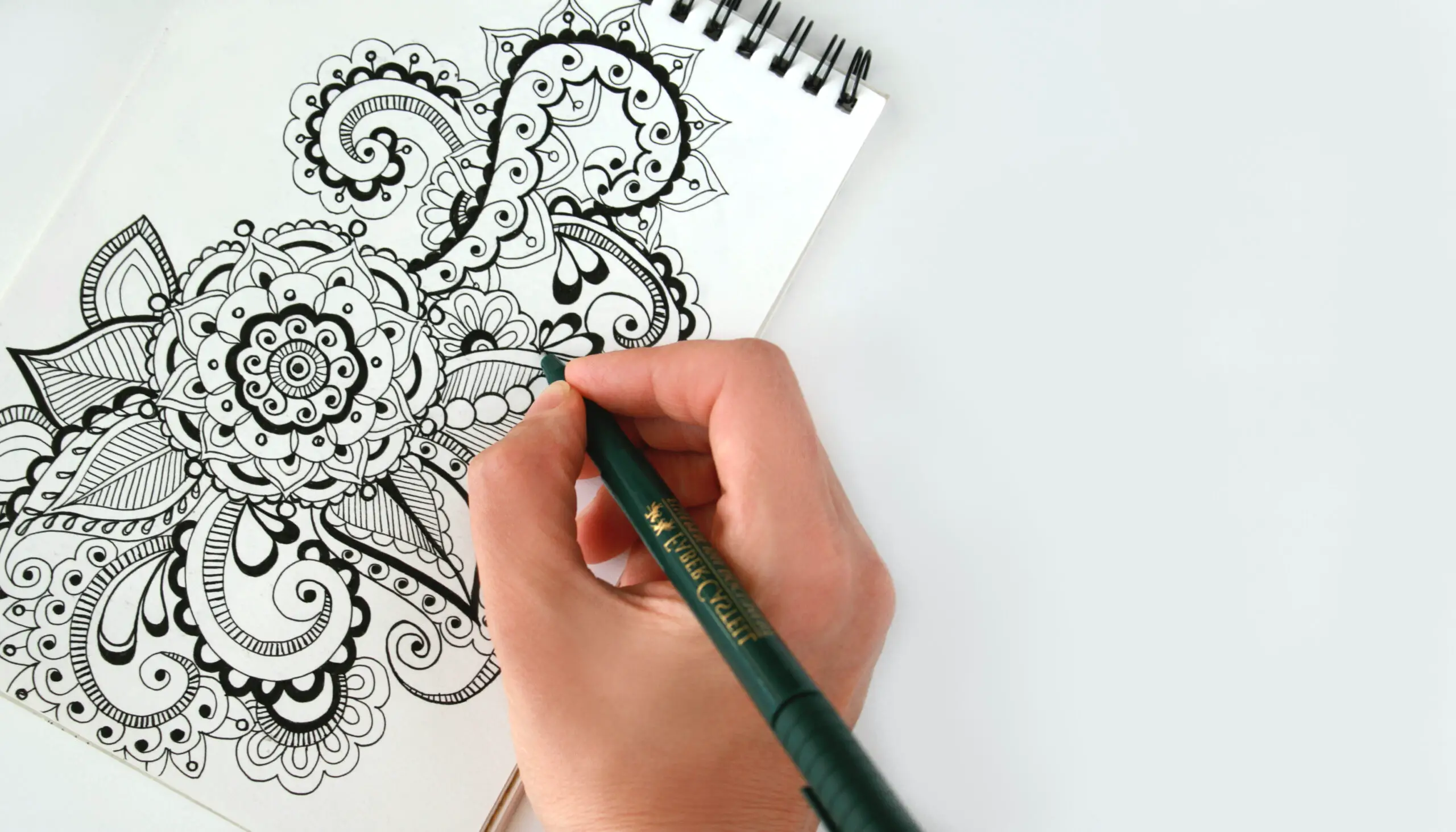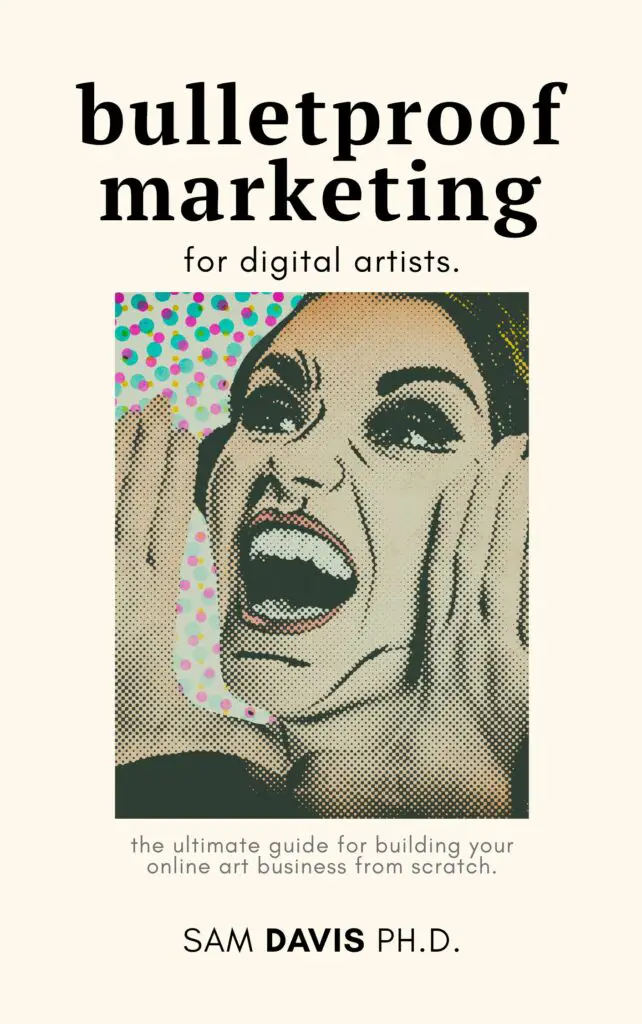Drawing is one of the most rewarding art forms that allows you to develop your creativity, push your limits, and express yourself. It's also a skill that can be used for almost any purpose – from self-expression and communication, to designing physical products and artwork.
In this guide, we'll help you unlock your inner artist by covering different drawing techniques and materials. With every step, we'll provide tips and tricks to improve your skills as an artist. Let’s get started!
Getting Started With Drawing
If you're interested in drawing, there are a few steps you should take to get started. To start, you'll need art supplies such as paper, pencils and erasers. When practicing drawing, it's important to learn the basics of drawing. This includes learning about line, shape, form and perspective.
You can begin practicing these fundamentals by sketching simple objects. As you continue practicing, try out different mediums and techniques in your art practice. This will allow you to become more comfortable with drawing and develop your own style of art. By taking these steps, you can enjoy drawing and develop your creative skills beyond what you could imagine.

Understanding basic techniques and principles of drawing
Drawing is a key skill that can help individuals express their creativity and creativity. Understanding basic drawing techniques and principles is essential for creating beautiful art. It is important to learn how to accurately observe and draw what you see.
Besides, it takes practice and patience to become a good artist. To improve your drawing skills, try practicing basic shapes and learning to draw from reference photos. Another way to become a better artist is learning about the fundamentals of perspective, proportion, shading, line quality, and value. By understanding these basic techniques, you can create unique and expressive pieces of art.
Tips for Creating the Perfect Drawing Setup
When it comes to creating the perfect drawing setup, there are a few factors to consider. First, you need a drawing surface that's large enough for your intended drawing size and shape. A good option is paper, but you can also experiment with different materials such as canvas or stone. Another vital aspect of your drawing setup is the tools you use.
Different art supplies offer different features and benefits, so it's worth experimenting with different options to find the perfect fit for your drawing style and vision. Finally, your drawing space should be clutter-free and comfortable. This will ensure that you're able to stay focused on your work and create high-quality drawings every time.
Creating an inspiring workspace
To create the perfect drawing setup, it's important to have the right supplies and work space. You want to choose a space in your home that is comfortable and inspiring. Whether you're working from your bedroom, office, or family room, make sure to surround yourself with art and pictures that will help you stay motivated while drawing.
When it comes to tools, it is best to have a range of different ones, such as paper, pencils, erasers, and sharpeners. It's also helpful to organize your workspace so that everything is easily accessible and within reach. Putting all of the necessary tools within reach will allow you to get started drawing immediately without searching for them. However, it's important to keep your workspace organized so that you don't lose track of anything while drawing.
Different Techniques to Improve Your Drawing Skills
If you're looking to improve your drawing skills, there are plenty of ways to do so. One way is to practice drawing your subject in different ways and varying the details in your drawing. This is what drawing lessons offer. This will help you develop your drawing skills and become more comfortable with different styles of art.
Figure drawing is a great, easy way to improve your basic skills. You can do figure drawing at your own pace, or join an art school or class to have it timed.
Another way is to use quality art supplies that are easy to use and provide you with great results. Another way is to practice perspective, which involves learning the basics of linear and atmospheric perspective. With these techniques, you can develop your drawing abilities and perfect your artistry.
Finally, you can experiment with different mediums such as pencil, pen, charcoal, pastel, or paint to create a variety of effects and expressions. By practicing these steps and using the right techniques, you can improve your drawing abilities and draw beautiful art with ease.

Understanding basic shapes and proportions when learning to draw
Understanding basic shapes and proportions is essential when drawing a scene or object. It can help you create realistic drawings by recognizing different types of shapes such as circles, squares, triangles, and more. Working with various line weights and using shading techniques are ways to add depth to your work.
Additionally, understanding perspective is critical for creating realistic scenes and objects in your drawings. By practicing shading techniques and drawing from life, you can develop your drawing skill and bring your art to life.
When it comes to improving your drawing skills, practice makes progress so it's important to spend time practicing your craft. Whether you prefer drawing from life or from a reference photo, be sure to draw from various angles and poses in order to improve your accuracy and natural flow in the art process.
Color theory is also integral to creating vibrant artworks that stand out visually. Understanding how different colors work together can help you create eye-catching works of art. Overall, practicing drawing skills can help you take your art to the next level and become an accomplished artist.
What Drawing Materials and Supplies Should I Use?
The materials you use to create art can make a difference in the outcome of your piece. When choosing your drawing supplies, consider the type of paper you're using. Choose drawing paper that is sturdy and doesn't easily tear or break when handled. Also, consider the type of pencil or pen you're using. Choose graphite pencils of varying hardness for different effects. Choose pens with a thick point for thicker lines, and choose thinner pens for sketchier lines.
When it comes to paint or stains, choose media that best suits your drawing style. For example, if you prefer water-based media, choose water-based paints or stains. If you prefer oil-based media, choose oil-based paints or stains. Choose brushes with the right shape, size, and head for your painting style. This will help ensure your artwork looks as intended on the canvas or paper.
Other art supplies such as erasers, kneaded erasers, and sharpeners can also enhance your art experience and help create great pieces.
Pencils and Charcoal
Pencils and charcoal are the two primary mediums for drawing. They can be used alone or together to create different effects. Pencils come in a variety of grades and hardness, allowing you to create different effects. Charcoal is great for creating bold, dark lines and can be blended and smudged to create a range of tones.
Other drawing materials, such as pastels, colored pencils, markers, and paints, are also good for varying your creative palette. It's important to experiment with different materials to find out which ones best suit your style of drawing. Whether you're drawing simple shapes or complex scenes from life, there are various drawing media that can help you express your vision.
Digital art software
Digital art software is an increasingly popular choice for those looking to learn to draw. It offers a range of features, from the ability to quickly sketch out ideas to more advanced tools for creating detailed illustrations.
The software can be used on both desktop and mobile devices, making it a great option for any budget or skill level. The wide range of features and variety of options make digital art software an attractive choice for creative exploration. Whether you're new to drawing or an experienced artist, digital art software has something to offer everyone.
Some people love the Adobe Suite, including Adobe Illustrator and Adobe Photoshop. I actually don't use Adobe Illustrator very much, instead preferring to use standalone tools like the Affinity Publisher suite, or, for digital painting, Rebelle 5.
I love digital painting tools like these because I can bring reference images right into my workspace, and work at my own pace to learn drawing. I can follow step-by-step tutorials or just do it myself. It's a great practice for my weekends, and it really does improve my own work (professionally).
How to Make the Most of Your Practice Time
When it comes to drawing, consistency is key. That way, your practice time becomes a distinct part of your day that doesn't deviate from the same routine. You need to set aside a specific amount of time for drawing each day and stick to it no matter what. This will help you improve your drawing skills quickly and consistently.
Also, break your drawing sessions into small, achievable tasks. Doing so will keep your focus sharp and allow you to make steady progress. Lastly, take breaks often to rest your eyes and mind. Aim for 30-60 minute breaks every hour or so. This way, you can refresh your mental state and continue to draw with ease and confidence.
And lastly, experiment with different techniques and materials. By doing so, you can better understand the various ways of drawing and which one best suits your skill level and preferences.
As you can see, there's no perfect formula for developing good drawing skills; it all depends on the individual's dedication, motivation, and willingness to experiment and try new things.
Establish a regular practice schedule
A regular practice schedule is vital for developing your drawing skills. Setting aside time to practice regularly can help you stay motivated and on track with your drawing goals. You may find it helpful to set aside a certain amount of time every day or week to practice your drawing skills.
It's best to include short breaks throughout your practice sessions, as this will help keep your focus and energy levels up. If you are new to drawing, it may be helpful to work in a space where there are few distractions, so that you can focus on improving your technique.
However, don't be discouraged if things don't go perfectly the first few times; with practice, you'll gradually improve and gain confidence in your art work. With the right attitude, you can improve your muscle memory and learn to draw more than just stick figures. I promise.
Dealing with Creative Blocks and Drawing Burnout
– Take breaks and step away from the drawing when needed.
– Try different projects and media to keep your creative process fresh. This will help you avoid becoming bored and stagnant.
– Ask for feedback and constructive criticism from other artists. This will help you become more aware of your strengths and weaknesses. This can help you develop as an artist and strengthen your creative process.
– Establish a regular drawing routine to stay motivated and inspired. This will help you stay on track and develop your drawing habits. A drawing routine is essential for developing good drawing habits. It helps you become more confident in your ability to draw the same thing multiple times.
As an artist, it's important to develop good drawing habits and routines to stay creative and distinctive in your work.
Take time to appreciate the small successes
When facing creative blocks, it's important to take time for yourself to reset and regroup. To do this, you might consider practicing positive self-talk, reminding yourself of all the small successes you've achieved so far. Taking a break from drawing every now and then can be a good way to recharge your batteries and give you a fresh perspective on the subject. Alternatively, experimenting with different mediums or taking a class in a different art form may help you focus on other projects. Whatever you do, remember to stay motivated and keep pushing forward. Creativity is an essential part of any artist's toolbox, and it can only be truly realized when you are inspired and passionate about your work.
Find a way to re-ignite your passion for drawing
It can be challenging to overcome drawing burnout and creative blocks. But the best way to regain your passion for drawing is to explore different mediums and styles. This can help you discover what inspires you and find new challenges that stretch your skill level. Besides, it's important to take time to relax and look at art from a different perspective. Try experimenting with new techniques or honing existing ones. Surround yourself with other creative people and collaborate on projects. By exploring different mediums and staying focused on your drawing, you'll be able to overcome drawing burnout and reach your creative potential.
Tips for Developing Your Own Unique Style
As an aspiring artist, it's important to develop a unique style that reflects your own creative vision. This involves experimenting with different mediums and materials, practicing different artistic techniques such as shading, blending, and layering, and finding inspiration from other artists and your environment. However, it's important to not be afraid to make mistakes when developing your unique style. Making mistakes is part of the learning process and can help you become more comfortable drawing different types of subjects. It's also important to take breaks while drawing so that you don't become overwhelmed or burned out. By following these tips, you can begin developing a unique style that reflects your creative vision.
Tips for improving your drawing skills
To improve your drawing skills, it's important to practice regularly and set aside dedicated time for drawing. This will help you develop your drawing skills and improve your execution of different techniques and materials. The work of established artists can be a great source of inspiration for developing your own style. You may also consider taking classes or workshops to learn specific skills and techniques. Spending time observing nature and objects around you can help you better understand form and perspective. By consistently practicing and developing your drawing skills, you can become capable of creating vibrant and expressive sketches.
Frequently Asked Questions
What are the fundamentals of drawing?
Drawing is an art form that requires skill, practice, and patience. If you want to get better at drawing, there are some fundamental principles you should consider learning:
1. Proportion & Perspective: Once you have a good understanding of these two concepts, it will become easier for you to draw objects accurately. This will help you create artwork with more realism and detail.
2. Seeing Light, Shadow, Form and Texture: Learning to identify these elements in different shapes can help you capture them accurately in your drawings.
3. Composition: Composed of the various elements of art like line, color, texture, shape, etc., composition is what makes your drawing look aesthetically pleasing. Learning the basics of composition can help you put together a great piece of artwork that captivates the viewer.
4. Drawing from Life or Reference Photos: Drawing from life or reference photos is a great way to hone your skills as an artist and develop visual memory. This process helps you understand the nuances of light and shadow better, which will come handy while drawing from imagination as well.
What tips and techniques can help a beginner improve their drawing skills?
If you’re a beginner looking to improve your drawing skills, here are some tips and techniques that can help get you started.
First and foremost, it’s important to master the basics of drawing such as shapes, lines, shading and perspective. With practice and repetition, these fundamentals will come together in an intuitive way.
Once you have the basics down, start sketching from life or from photographs. This way you'll learn how to draw real-life objects. Additionally, experiment with different materials and techniques so that you can discover what works best for you.
The next step is to refine your skills by studying the work of other artists. Be inspired by their techniques and creativity and use it as a tool to boost your own level of skill. Furthermore, set small achievable goals so that you can easily track your progress over time.
These tips and techniques will surely help beginner artists in improving their drawing skills and expressing their creativity through art!
How can I develop my own artistic style?
Developing your own artistic style is no easy feat, as it takes time and effort. But it's definitely worth striving for. Here are some steps you can take to help guide you in the right direction:
1. Experiment with different mediums, techniques, and tools to find out what works best for you. This can include using different types of paints, colour combinations, paper textures, etc.
2. Analyze the work of other artists and observe how they use texture, colour, composition, etc. Doing so will help you understand techniques that might be useful to incorporate into your own art pieces.
3. Practice regularly and make sure to challenge yourself by trying new things or experimenting with something different than what you've done before. This will ensure that your art is constantly evolving and growing.
4. Lastly, draw inspiration from your own life experiences and feelings. Drawing upon your inner thoughts and memories can help give your style a unique perspective that cannot be replicated by anyone else!
Are there any resources to help me practice and refine my drawing skills?
If you're looking for ways to practice and refine your drawing skills, then you're in luck! There are a variety of resources both online and offline that can help you on your way.
When it comes to online resources, websites such as YouTube, Skillshare, and Udemy offer countless tutorials and courses on basic drawing techniques. Additionally, there are art blogs where experienced artists provide tips and advice to beginner level drafters.
Offline resources include books, magazines, art classes, workshops, and even art galleries which can provide inspiration and access to new materials or different perspectives of the skill. These resources can be extremely helpful when it comes to getting familiar with the fundamentals of drawing. Developing an understanding of these fundamentals is essential if you want to refine your skills.
Conclusion
Drawing is an ever-evolving skill. It requires a combination of talent, skill, and practice. There are no shortcuts to creating stunning artwork—only dedication, patience, and practice. To unlock your potential as an artist, set goals for yourself to improve your skills and work on them regularly. If you can find the time to practice regularly and work on your skills, you’ll see a difference in the quality of your artwork over time. For more blog entries on drawing, visit our blog today!

